The Szekely National Museum is open for public since 1875. This outstanding
scientific institution has undertaken the task to carry on research activities
and to present the heritage of the Szekelys and the region of Székelyföld. The
year 1879 that appears on the Museum’s seal represents the date when it passed
into the common proprietorship of the Székely nation. At present, it represents
the biggest Hungarian public collection outside Hungary and it is also one of the most important touristic
attractions of Kovászna (Covasna) county and Szekelyföld. It is enlisted as a
regional museum in the network of the Romanian museums and it is maintained by
the Council of Kovaszna County. Its activity is also supported by the Szekely
National Museum Foundation registered in the 1990’s.
The complex in
Sepsiszentgyörgy (Sfântu Gheorghe) designed by Karoly Kos comprises a library
and departments for natural science, archeology-history and ethnography. The Art Gallery in Sepsiszentgyörgy, the external museum units in
Kézdivásárhely (Tîrgu Secuiesc), Csernáton (Cernat), Barót (Baraolt) and Zabola
(Zăbala) also make part of the institution.
I. Internal
Departments of the Museum
I. The Library
embraces, on one
hand, a research library that helps the research activity of the institution
and, on the other hand is home to a considerable collection of antique books,
press and other special materials. Its most significant asset is the
Apor-codex, which contains, among others, the psalms of the first Hungarian
bible translation (15th century) that were copied in it around 1500. (The bible
translation mentioned above is considered the fourth oldest Hungarian literary
work.)
2. The Natural
Science Department
comprises, beside
the most complete collection of Pliocene and Quaternary mammal fauna in
Central-Eastern Europe, the biggest mushroom collection in Romania, the butterfly collection of László Diószeghy
containing more than 23 000 species and a very significant botanical
collection. The department’s entomologist is well known for discovering several
new species.
3.
Archaeological-Historical Department
The department’s archeological collection numbers more than
50 000 items. The Museum has researched and cataloged especially the sites of Kovászna County: the painted pottery culture from the Neolithic and
Bronze Age found in Erősd (Ariuşd), the Neolithic findings of the site from
Lécfalva (Leţ) and the findings of the cemeteries in Zabola (Zăbala) and
Petőfalva (Petea) dating from the Árpád Era. The permanent archaeological
exposition presents 35 000 years of material culture belonging to this area.
The historical collection’s most significant
values are the military relics of the Székely orders dating from the Middle
Age, relics of the Revolution from 1848 (for instance the field printing press
of general Bem), the weapon collection numbering 250 pieces, as well as the
significant furniture and glass collection of culture-historical value.
4. The Ethnographical Department
is famous for its
unique collection in Transylvania numbering more than 15 000 pieces – among
which the most significant are the noble embroidery collection dating from the
16–17th century, the glazed tiles and ceramic collections, the old carved and
painted furniture, as well as the remarkable collection of traditional folk
children toys. As an open-air exposition an 18th century house from the Alcsík
(Lower Ciuc) region can be seen, with partially original
furniture.



 back previous page
back previous page


 what's nearby
what's nearby city info
city info

